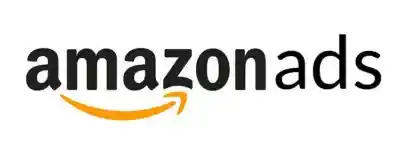Benefits of Programmatic Advertising
Curious about how programmatic advertising can elevate your marketing campaigns? It simplifies the process of purchasing ads, sharpens the precision of reaching specific audiences, and offers opportunities for instantaneous adjustments to your campaign. Uncover the ways these benefits can amplify your marketing strategies.
Key Takeaways
- Programmatic advertising streamlines the ad-buying process, enhancing efficiency and allowing marketers to focus on strategy and creativity.
- Precision targeting capabilities enable advertisers to connect with specific audiences more effectively, boosting engagement and ensuring better ROI.
- Real-time optimization and transparent analytics enable swift campaign adjustments, enhancing reach and sustaining a competitive advantage.
What is Programmatic Advertising?
Programmatic advertising is the automated process of buying and selling digital ad space using technology and data. Instead of relying on manual negotiations and predefined ad placements, programmatic advertising leverages algorithms and real-time bidding (RTB) to serve ads to the most relevant audience at the most opportune time.
This approach uses user data, such as browsing behavior, demographics, and interests, to target specific audiences with personalized messaging across various channels, including websites, mobile apps, video platforms, and connected TVs. As a result, advertisers can deliver more relevant ads, increase efficiency, and improve campaign performance.
How Does Programmatic Advertising Work?
Programmatic advertising operates through a real-time, automated system that connects advertisers with publishers via a digital marketplace. This process not only streamlines ad buying but also delivers significant benefits such as enhanced targeting, cost-efficiency, and faster campaign execution.
Advertisers use Demand-Side Platforms (DSPs) to purchase ad inventory and manage campaigns. These platforms assess available impressions and decide, within milliseconds, which ones are worth bidding on based on user data. On the other side, publishers utilize Supply-Side Platforms (SSPs) to make their ad space available to potential buyers. SSPs send ad availability and user information to the ad exchange.
The ad exchange functions as a central digital marketplace where ad inventory is auctioned in real time. When a user opens a website or app, the ad exchange instantly initiates an auction among advertisers.
This auction process, known as Real-Time Bidding (RTB), enables advertisers to bid on impressions based on how well the user matches their targeting criteria. The highest bidder wins, and their ad is displayed immediately. This highly automated and data-driven workflow results in precise audience targeting, reduced ad spend waste, and improved return on investment, all of which highlight the core benefits of programmatic advertising.
Key Benefits of Programmatic Advertising
Programmatic advertising revolutionizes digital marketing by leveraging automation, data, and real-time decision-making to deliver more targeted and cost-effective campaigns. Its rising popularity among today’s marketers is due to several key advantages.
Enhanced Efficiency and Automation
One of the most significant advantages of programmatic advertising is its ability to automate the ad-buying process across multiple platforms, which drastically improves operational efficiency. It eliminates the need for manual negotiations and allows for instantaneous bidding on available ad space through RTB.
This automation not only reduces human error but also speeds up campaign execution. Marketers can swiftly adjust strategies, reallocate budgets, and focus more on creativity and strategic planning instead of the logistics of ad placement. By leveraging intelligent algorithms, programmatic advertising simplifies complex workflows, saving time and enabling faster decision-making.
For businesses looking to optimize both time and resources, programmatic advertising presents a scalable solution that enhances overall productivity and campaign performance with minimal manual effort.
Precision Targeting Capabilities
Programmatic advertising excels at delivering highly targeted messages to specific audiences. By utilizing real-time data, such as browsing behavior, location, demographics, and interests, marketers can create highly relevant campaigns tailored to each user segment.
Dynamic Creative Optimization (DCO) further enhances this by customizing ad creatives based on audience profiles, ensuring each impression resonates more deeply with the viewer. This not only increases engagement but also significantly improves conversion rates.
Compared to traditional methods, programmatic advertising enables granular audience segmentation and precise message delivery, making your campaigns more impactful and results-driven.
Real-Time Optimization and Performance Tracking
Programmatic advertising enables marketers to make immediate adjustments to their strategies using real-time performance data. This capability to quickly adapt campaigns allows advertisers to remain flexible and responsive to shifts in the market, ensuring their campaigns stay relevant and effective.
Automated alerts notify marketers of shifts in performance, both positive and negative, allowing for timely optimizations. Advanced analytics tools track essential metrics such as impressions, click-through rates (CTR), and conversions, providing actionable insights that guide data-driven decision-making.
At the heart of this optimization is Real-Time Bidding (RTB), where advertisers bid for individual impressions in milliseconds. This ensures that each ad is placed strategically for maximum visibility and return on investment (ROI), making programmatic advertising a highly responsive and performance-focused solution.
Increased Audience Reach and Engagement
Programmatic advertising increases your audience reach and enhances engagement by targeting users across a wide range of websites and streaming platforms. The emergence of new channels like Connected TV (CTV) opens up fresh, dynamic opportunities for advertisers to interact with viewers in innovative ways.
A major benefit of programmatic advertising is its ability to retarget users who have already interacted with your brand, improving conversion potential. This approach encourages more personalized interactions with consumers throughout their journey, which in turn enhances brand recognition and deepens engagement.
With programmatic ad buying, you can tap into a variety of ad formats, optimizing engagement across multiple platforms. This integrated, cross-channel strategy ensures that your message reaches your intended audience consistently, no matter where they are online, amplifying your digital advertising impact.
Cost-Effectiveness and Budget Flexibility
Programmatic advertising excels in maximizing cost-efficiency, often yielding up to 30% better return on investment compared to traditional marketing strategies. It is notably more cost-effective than direct or manual purchasing methods, making it a highly attractive choice for marketers focused on optimizing their budgets.
A key benefit of programmatic advertising is its ability to adjust budgets in real-time based on ad performance. This dynamic budget optimization ensures that advertising spend is aligned with the effectiveness of the campaigns, enabling more precise control over expenditures. The integration of header bidding technology further enhances the efficiency of managing ad budgets.
By utilizing data-driven strategies for budget allocation, programmatic advertising helps achieve superior returns on investment. Leveraging both proprietary (first-party) and third-party data significantly improves targeting precision, ensuring that resources are allocated more efficiently. As a result, every dollar spent is optimized to support your marketing goals.
Transparency in Ad Placements
Clarity in ad positioning is a key element of programmatic advertising, playing a crucial role in the success and credibility of online campaigns. It provides advertisers with detailed insights into the locations and performance metrics of their ads, fostering greater transparency around advertising expenses. This visibility allows advertisers to optimize their ad placements with precision.
Programmatic advertising also emphasizes data transparency through a privacy-focused approach. Whitelists, or preselected outlets for running ads, ensure that advertisements appear in suitable environments. On the other hand, blacklists used by demand-side platforms help prevent ads from appearing on inappropriate sites, safeguarding campaign integrity.
While challenges like consumer privacy concerns and instances of ad fraud exist, programmatic advertising continues to bolster transparency and build trust throughout the ad buying process through stringent measures. This clarity is essential for refining marketing strategies and ensuring ads reach the right audience effectively.
Variety of Creative Formats
Programmatic advertising encompasses a diverse array of ad formats, providing marketers with the flexibility to captivate audiences. This includes engaging video ads, eye-catching display ads, and immersive native ads tailored to various user interactions. For instance, interstitial ads grab attention through full-page overlays that briefly interrupt before revealing the main content.
Within programmatic advertising campaigns, audio advertisements are also gaining popularity. These are often incorporated into podcasts and digital streaming services. Connected TV (CTV) ads further extend a campaign’s reach beyond conventional television by targeting audience segments on streaming platforms.
Programmatic native ads seamlessly integrate within surrounding content to create a more natural and engaging user experience. This assortment of creative formats allows for greater relevance and interaction. By strategically using diverse ad formats within your programmatic ad campaigns, you can create a deeper connection with your audience, resulting in greater engagement and higher conversion rates.
Omnichannel Presence
Programmatic advertising significantly contributes to a robust omnichannel presence, enabling uniform brand exposure across diverse devices and platforms. This ensures that your message is delivered to your audience no matter where they are located. Such cross-device consistency delivers a smooth experience for consumers, which amplifies the impact of your brand’s messaging.
Programmatic advertising follows consumers across multiple devices and channels, helping to develop a cohesive digital marketing strategy. This approach enhances brand recognition and simplifies lead generation, improving the overall efficiency of your digital marketing efforts.
By ensuring consistent visibility on various platforms, programmatic advertising helps keep your brand prominent in the minds of consumers. Embracing an omnichannel approach is essential in forging strong and enduring customer relationships.
Easily Scalable Campaigns
Programmatic advertising offers a scalable solution for marketers looking to expand their audience. It efficiently manages large volumes of ad inventory across various platforms, allowing marketing efforts to grow alongside business expansion. One of its key advantages is scalability, simplifying the process of selling ad inventory.
It also provides flexibility in campaign budgets, enabling companies to optimize ad spending within predefined financial limits. Through Demand-Side Platforms (DSPs), marketers gain the tools necessary to efficiently purchase display, video, and mobile ads, broadening their audience reach.
By leveraging data-driven strategies, programmatic advertising targets specific demographics based on behaviors and interests, ensuring campaigns engage the right consumers and improve marketing efficiency.
Time Saving Benefits
Programmatic advertising uses artificial intelligence and automation to streamline operations, allowing marketers to focus on strategic planning and creativity instead of managing ad placements.
It accelerates the acquisition of ad space across multiple websites via ad exchanges, reducing transaction time and minimizing human error, which helps ensure smooth campaign execution.
Summary
Programmatic advertising brings a wealth of benefits that can transform digital marketing campaigns, from strategy to execution. It boosts efficiency, enhances targeting precision, and allows for real-time adjustments, all while being cost-effective. With added transparency, creative flexibility, and cross-channel capabilities, it amplifies the overall impact, making it a powerful asset for modern marketers.
By integrating programmatic advertising, you can engage your audience more effectively, optimize ad spend, and achieve higher engagement and conversions. Unlike traditional methods, programmatic advertising delivers unmatched precision and performance, significantly improving the success of your campaigns.











